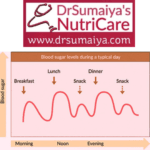Wheatgrass has gained popularity as a superfood, often touted for its exceptional nutritional benefits. But how does it truly stack up against other fruits and vegetables? This post dives into the evidence-based facts about wheatgrass and its place in a healthy diet.
Table of Contents
- Nutritional Profile of Wheatgrass
- Wheatgrass vs. Other Fruits and Vegetables
- The Evidence: Does Wheatgrass Stand Out?
- Incorporating a Variety of Fruits and Vegetables
- Conclusion
- References
Nutritional Profile of Wheatgrass
Wheatgrass, the young grass of the common wheat plant, Triticum aestivum, is a source of various nutrients, including:
- Vitamins: A, C, E, K, and some B vitamins
- Minerals: Iron, calcium, magnesium
- Amino acids: Building blocks of protein
- Chlorophyll: The pigment that gives plants their green color
- Antioxidants: Compounds that help protect cells from damage
While this list appears impressive, it’s crucial to compare the *quantities* of these nutrients to those found in other readily available fruits and vegetables. The concentrations of some nutrients in wheatgrass can vary significantly depending on growing conditions, harvesting time, and processing methods.

Wheatgrass vs. Other Fruits and Vegetables
To understand the relative nutritional value of wheatgrass, let’s compare it to some common fruits and vegetables:
| Nutrient | Wheatgrass (1 oz, approx.) | Spinach (1 cup, raw) | Broccoli (1 cup, raw) | Orange (1 medium) |
|---|---|---|---|---|
| Vitamin C | ~10% DV | ~14% DV | ~135% DV | ~116% DV |
| Vitamin A | ~5% DV | ~56% DV | ~11% DV | ~4% DV |
| Iron | ~4% DV | ~5% DV | ~4% DV | ~1% DV |
| Calcium | ~2% DV | ~3% DV | ~4% DV | ~5% DV |
As the table illustrates, while wheatgrass provides some nutrients, other common fruits and vegetables often offer significantly higher amounts of key vitamins and minerals. For instance, spinach is a far superior source of Vitamin A, and broccoli and oranges provide substantially more Vitamin C.
The Evidence: Does Wheatgrass Stand Out?
There is no sound evidence to support the claim that wheatgrass is better than other fruits and vegetables in terms of nutrition. It cannot be recommended above any other choices in this food group. Many of the claims surrounding wheatgrass’s “superior” benefits lack robust scientific backing. While some preliminary studies suggest potential health benefits, these are often conducted in vitro (in test tubes) or on animals, and the results may not translate to humans. More large-scale, well-designed human clinical trials are needed to confirm any specific health advantages of wheatgrass over other plant-based foods.
Incorporating a Variety of Fruits and Vegetables
Instead of focusing solely on one “superfood” like wheatgrass, the key to a healthy diet is variety. Aim to consume a wide range of colorful fruits and vegetables daily. Each color represents different phytonutrients, each with unique health benefits. Here are some actionable tips:
- Fill half your plate with fruits and vegetables at each meal.
- Choose a rainbow of colors: Red (tomatoes, strawberries), orange (carrots, sweet potatoes), yellow (bananas, peppers), green (spinach, kale, broccoli), blue/purple (blueberries, eggplant).
- Don’t be afraid to experiment: Try new fruits and vegetables regularly.
- Prepare them in healthy ways: Steaming, roasting, grilling, or eating raw are preferable to frying.
- Prioritize Whole Foods: Choose whole fruits and vegetables over juices, as whole foods provide fiber, which is crucial for digestive health.
If you have specific dietary concerns or health conditions, it’s always best to consult with a registered dietitian or healthcare professional.
Conclusion
While wheatgrass contains nutrients, it’s not nutritionally superior to other fruits and vegetables. A balanced diet incorporating a wide variety of plant-based foods is the most effective way to ensure you’re getting the nutrients your body needs. Don’t fall for hype; focus on building a sustainable, healthy eating pattern that includes plenty of colorful fruits and vegetables.
References
- United States Department of Agriculture (USDA) FoodData Central: https://fdc.nal.usda.gov/
- American Heart Association: https://www.heart.org/


